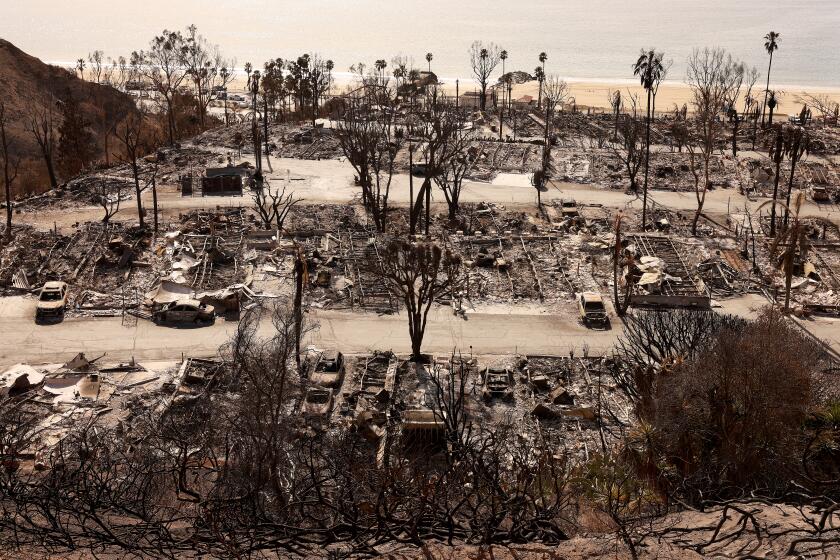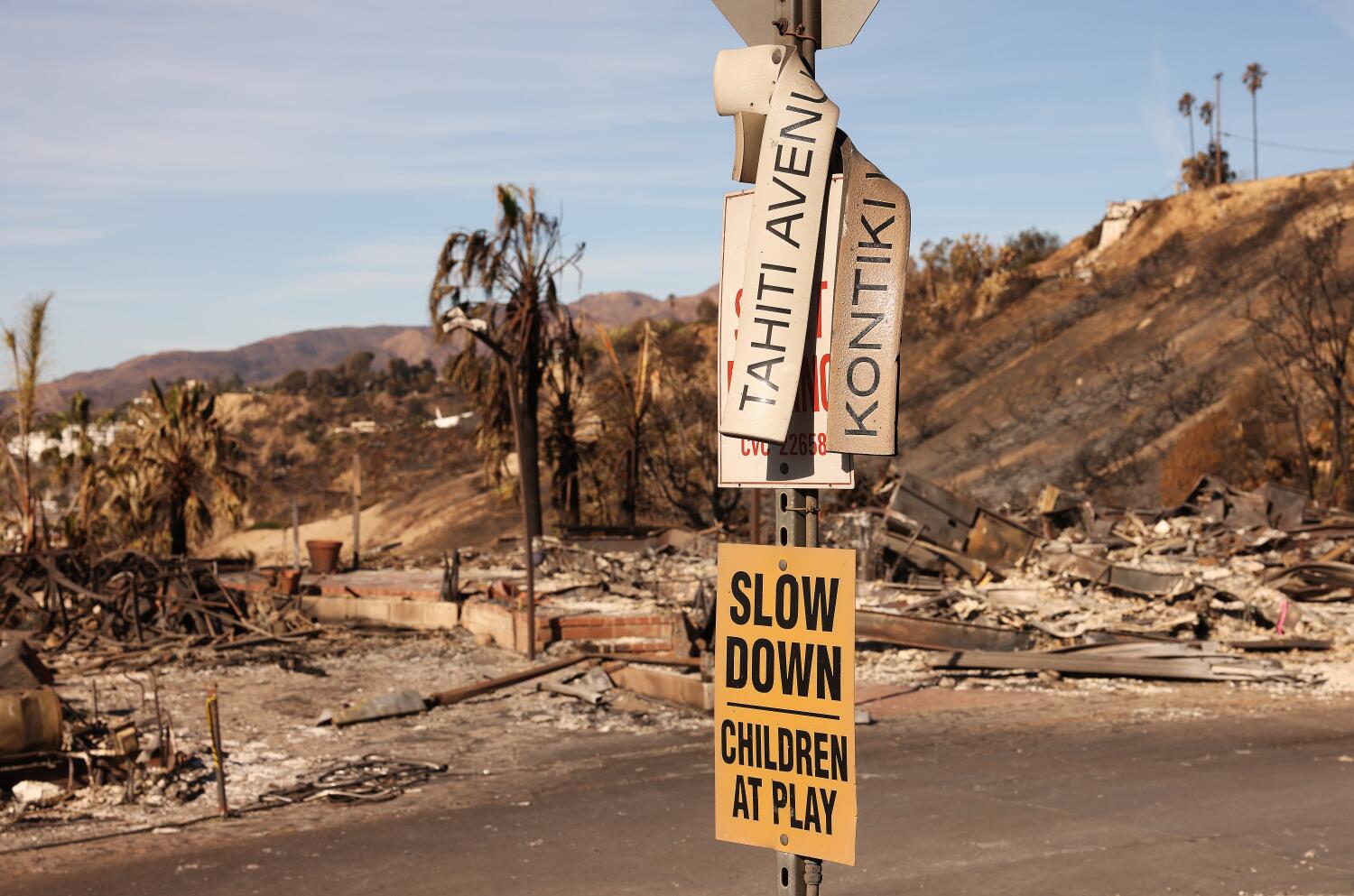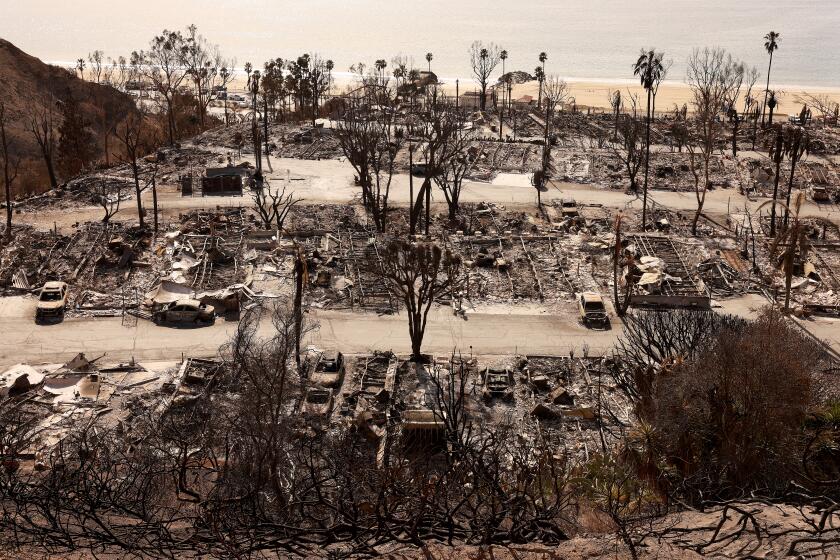
The residents of the Tahitian Terrace mobile home park in Pacific Palisades, who have been grappling with significant doubt over whether their community will be reconstructed—a choice beyond their control—are now “a step nearer to coming back,” stated Los Angeles County Supervisor Lindsey Horvath on Tuesday.
Horvath stated in an announcement that the mobile home park would now be part of the federally supported debris clearance initiative, having been excluded at first. This means residents can rest assured as the government will clean up their land.
The announcement comes after several weeks of uncertainty for the mobile home park’s owners and its 158 residences, with all but one being devastated by the Palisades fire on January 7th.
Tahitian Terrace was home to an eclectic mix. There were wealthy residents, including “Shark Tank” star and investor
Barbara Corcoran
. But there also were many seniors on fixed incomes who had paid off their homes decades ago, as well as a smattering of young, middle-income families.
At the hillside park situated directly opposite Will Rogers State Beach, homeowners possess their residences yet pay rent for the land they occupy, with rents being regulated. This park has traditionally been managed by a closely-knit, family-operated business entity that barely generates income from this asset.
The decision regarding who will cover the costs for removing the debris has been a crucial element in determining whether to reconstruct Tahitian Terrace, as mentioned by the park owners in a letter dated March 21 to the residents.
Ruthi Muñoz, a manager of the mobile home park who was reached by The Times on Tuesday, did not comment on the announcement, saying she was still learning the details.
Phase 2 of the cleanup for federal private-property debris removal is carried out by the U.S. Army Corps of Engineers and provided at no cost to qualifying homeowners who choose to participate. This stage comes after the initial phase where contractors from the U.S. Environmental Protection Agency eliminated dangerous household substances—such as pesticides, paint, and lithium-ion batteries—that can’t be transported to regular landfills.
Certain kinds of multifamily dwellings that include at least one unit owned by the occupant — like a duplex or condo —
are eligible for
the Army Corps’ Phase 2 cleanup.
But multifamily rental properties that are owned by for-profit entities and do not include a single owner-occupied unit, such as apartment complexes and mobile home parks, generally are not eligible.

The Federal Emergency Management Agency, which is responsible for allocating funding and outlining cleanup procedures,
has said
the owners of those commercial properties are expected to use their insurance and hire licensed contractors to conduct debris removal.
But those property owners have been allowed to apply for the Army Corps debris removal, with their eligibility being considered on a case-by-case basis.
Robert Fenton, FEMA’s Region 9 administrator, has said those property owners must provide justification for the use of federal funds on their cleanups, including that debris on the property poses a public health risk and that the commercial owner might not be able to complete the debris removal independently.
On Monday, in a letter to Nancy Ward, who leads the California Governor’s Office of Emergency Services, Fenton stated: “Following thorough deliberation, I concur with your evaluation that Tahitian Terrace qualifies as an uncommon and outstanding instance, thus making it suitable for participation in the PPDR [Private Property Debris Removal] initiative.”
On April 2, Los Angeles County authorities asked for the inclusion of the mobile home park, as stated in Fenton’s letter.
Even though the EPA has eliminated potentially dangerous substances, “owing to the distinctive features of the site, imminent dangers to public health and safety still persist,” Fenton stated.
He stated that the Army Corps estimates 50% of the areas on the site have friable asbestos.
The plots for the mobile homes sit on a rugged, charred slope above the Pacific Coast Highway. Prior to the wildfire, this highway saw approximately 48,000 cars daily, as mentioned in his account. He also noted that thorough cleanup at Tahitian Terrace must be carried out to remove any imminent danger to the well-being and security of these travelers.
Fenton outlined why the park’s owners, Azul Pacifico Inc.—a family-operated company that has been running Tahitian Terrace, their main asset, since 1960—might find it challenging to handle the cleanup of debris on their own.
He pointed out their monthly earnings as a hurdle. According to his documentation, before the fire, the company’s typical gross rental revenue stood at roughly $240,000 each month, not including utility costs and operational expenditures. He further noted that “their lease contract permits inhabitants to exit their leases given the present circumstances, potentially reducing their income.”
Moreover, Fenton pointed out that the owner’s insurance covers $1,000 per grave site for catastrophic debris removal, capped at $50,000.
Fenton stated that Los Angeles city authorities, having backed the county’s petition, consider Tahitian Terrace, which features rent-controlled spaces, as “a vital provider of affordable residences in Pacific Palisades.”
“Based on the City’s assurances, I am confident that including Tahitian Terrace in the PPDR program will accelerate the reopening of the park for its displaced tenants and ensure the community retains this affordable residential enclave in an otherwise affluent area.”
In their March correspondence with residents, the park’s owners stated that “a decision regarding reconstruction cannot be made until the completion of the debris removal process and the thorough analysis of all relevant factors.”
If Tahitian Terrace were to be reconstructed, they mentioned, the procedure “might require several years.”
Chris Russo, who finalized her purchase of a home at Tahitian Terrace just a day prior to the Palisades fire destroying it, mentioned that both she and fellow residents were perplexed by the campground’s omission from the federal cleanup efforts. They dedicated numerous hours contacting and corresponding with various governmental bodies, desperately requesting assistance to have their properties cleaned up.
“Without FEMA’s support, our capacity to go back home depends on those property owners with insufficient insurance coverage, who probably lack the financial means to handle the entire cost of recovery,” she penned in her letter to FEMA earlier this month. “The circumstances are critical, and your choice will dictate whether our neighborhood has the chance to reconstruct itself or vanish irreversibly from the map of Los Angeles.”
On Tuesday, Russo informed The Times that she was thrilled about the news, referring to herself as “a squeaky wheel” who ensured the matter didn’t get overlooked.
Russo stated, “Our community is highly organized since everyone aims to return.”
There has been a lot of conflict between us lately. It’s really draining. Achieving even a small victory—this is significant news. … This brings hope since we’ve been stuck, unsure about our future prospects.
Horvath, who represents the Westside area encompassing Malibu and the Palisades, has pushed for incorporating nonprofits, churches, mobile home parks, and commercial properties into the federal cleanup initiative for debris removal.
During her announcement on Tuesday, she mentioned that besides Tahitian Terrace, the county has asked for Palisades Bowl—a nearby mobile home park with approximately 170 residences—to be added as well.
By Tuesday, according to a statement from her spokesperson, the county’s plea remained unanswered.
This story originally appeared in
Los Angeles Times
.







